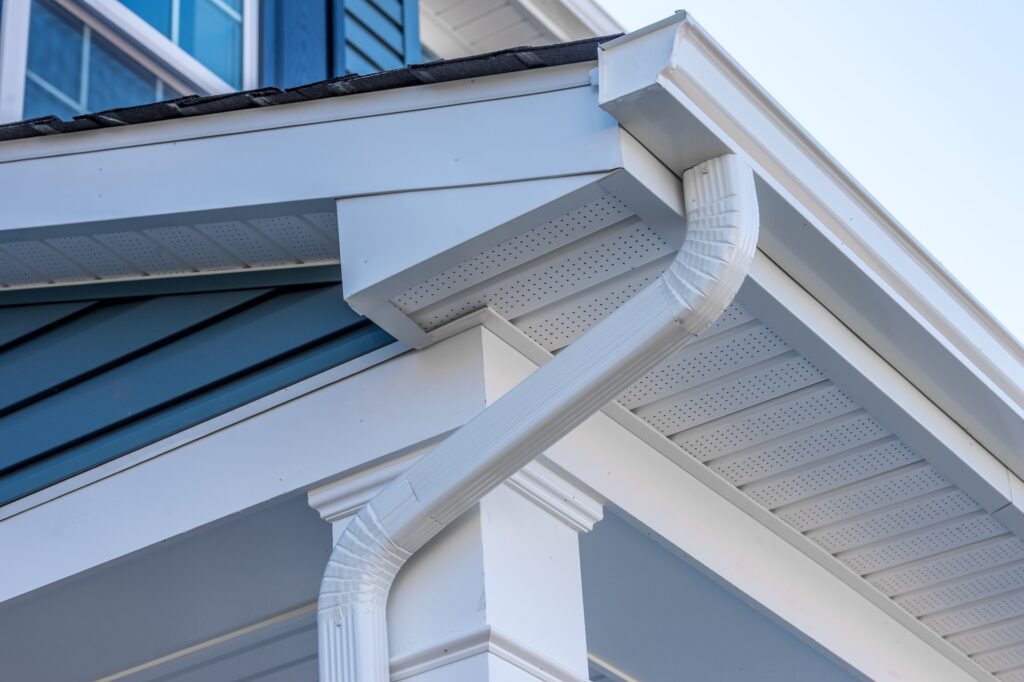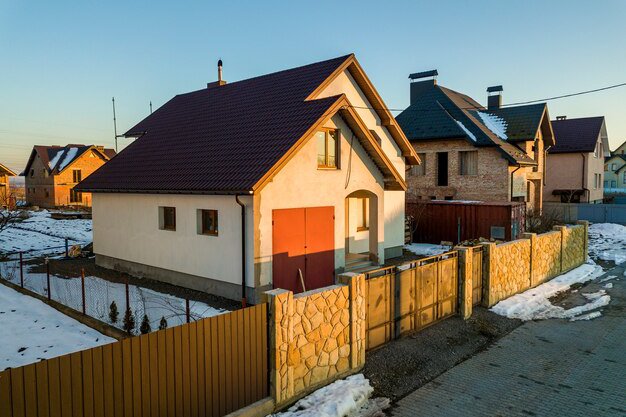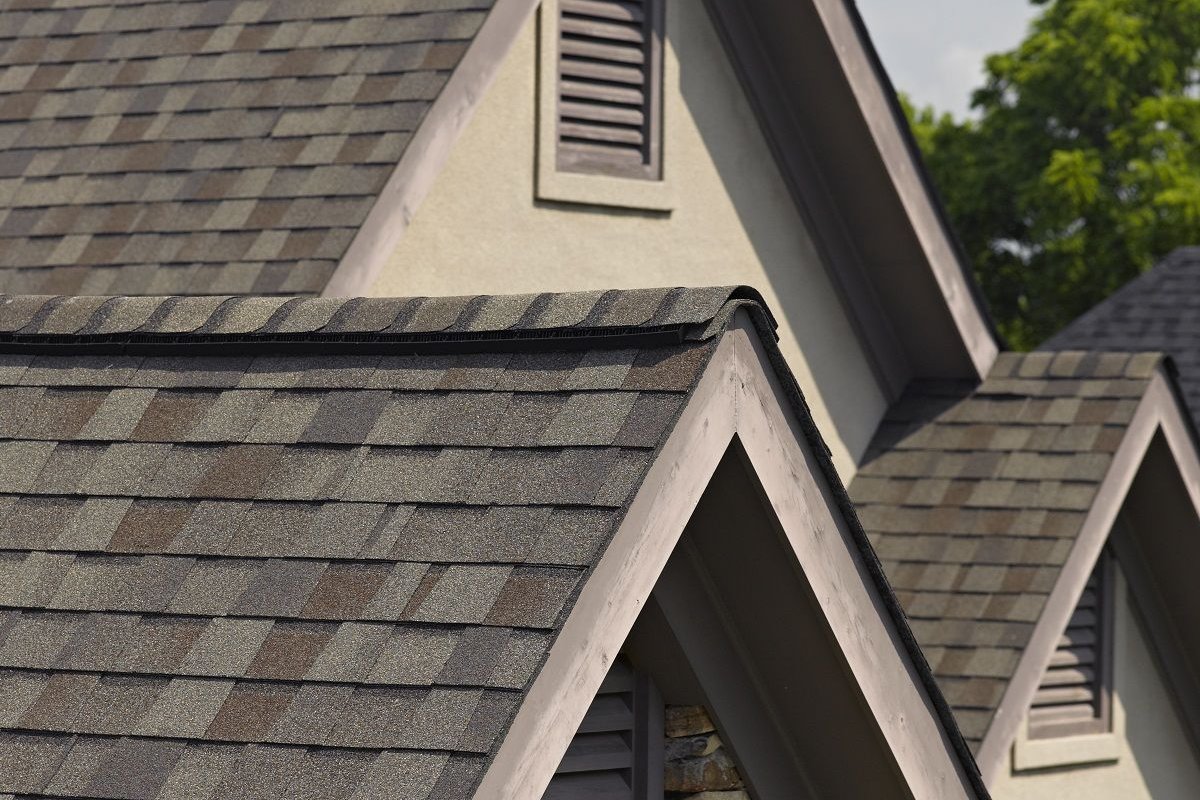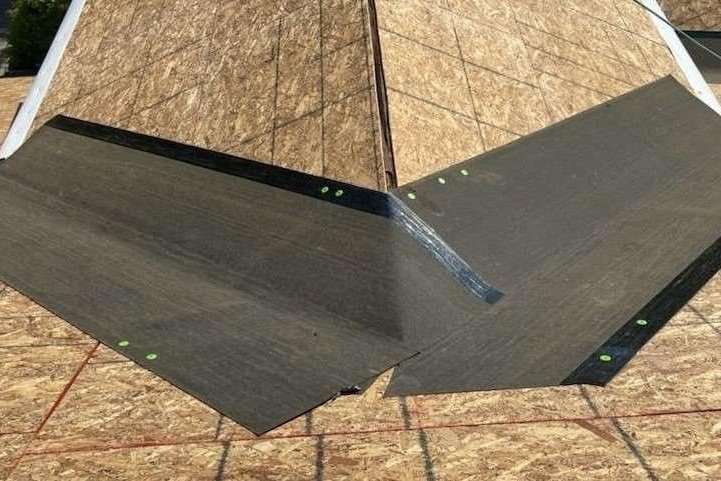OSB vs Plywood for Roof Decking: What's Best in St Helens, Oregon?
When planning a new roof or a roof replacement project in St Helens, Oregon, homeowners are faced with many decisions. One of the most fundamental, yet often overlooked, is the choice of material for the roof decking, also known as roof sheathing. This structural layer is installed directly over the rafters or trusses and serves as the base for all subsequent roofing materials, from the underlayment to the final shingles, metal panels, or tiles. The two most common materials used for this crucial component are Oriented Strand Board (OSB) and plywood. While both serve the same basic function, they have distinct characteristics that can impact the roof's performance, longevity, and cost. Understanding the differences between OSB and plywood is essential for making an informed decision that ensures the integrity and durability of your roof system for years to come.
Understanding Roof Decking's Role
Before diving into the specifics of OSB and plywood, it's important to appreciate the critical role roof decking plays. It's not just a surface for attaching shingles; it's a vital structural element that:
- Provides a Nailable Surface: It allows for the secure attachment of roofing materials, ensuring they stay in place against wind uplift and other forces.
- Distributes Loads: It helps distribute the weight of the roofing materials, snow, and wind across the roof's framing.
- Adds Shear Strength: It provides lateral bracing to the roof structure, helping the house resist forces from wind or seismic activity.
- Contributes to Fire Resistance: Certain types and thicknesses can contribute to the overall fire resistance rating of the roof assembly.
- Forms a Weather Barrier Base: While not waterproof on its own, it's the layer onto which underlayment and other protective barriers are installed.
Given these critical functions, the material chosen for your roof deck must be robust, stable, and appropriate for the local climate and intended roofing system.
What is Oriented Strand Board (OSB)?
Oriented Strand Board, or OSB, is an engineered wood product made from rectangular-shaped strands of wood that are oriented in specific directions, layered, and then bonded together with waterproof adhesives under heat and pressure. The strands are typically arranged in cross-oriented layers, similar to the veneer layers in plywood, which gives the board strength and stiffness.
OSB is manufactured from fast-growing, smaller-diameter trees, making it a more environmentally sustainable option in terms of resource utilization compared to plywood, which traditionally uses larger, older trees. The manufacturing process allows for high utilization of the log, with minimal waste.
Characteristics of OSB
- Appearance: Consists of visible wood strands and flakes pressed together.
- Consistency: Generally uniform in density and strength across the panel.
- Cost: Typically less expensive than plywood.
- Weight: Can be slightly heavier than plywood of the same thickness.
- Moisture Performance: More susceptible to edge swelling when exposed to moisture compared to plywood. Requires careful handling and immediate protection from the elements during installation.
- Nail Withdrawal Resistance: Generally has good nail holding power, particularly when fasteners are driven into the oriented strands.
OSB has become the most widely used sheathing material in residential construction across North America due to its cost-effectiveness and structural performance when properly installed and protected from moisture.
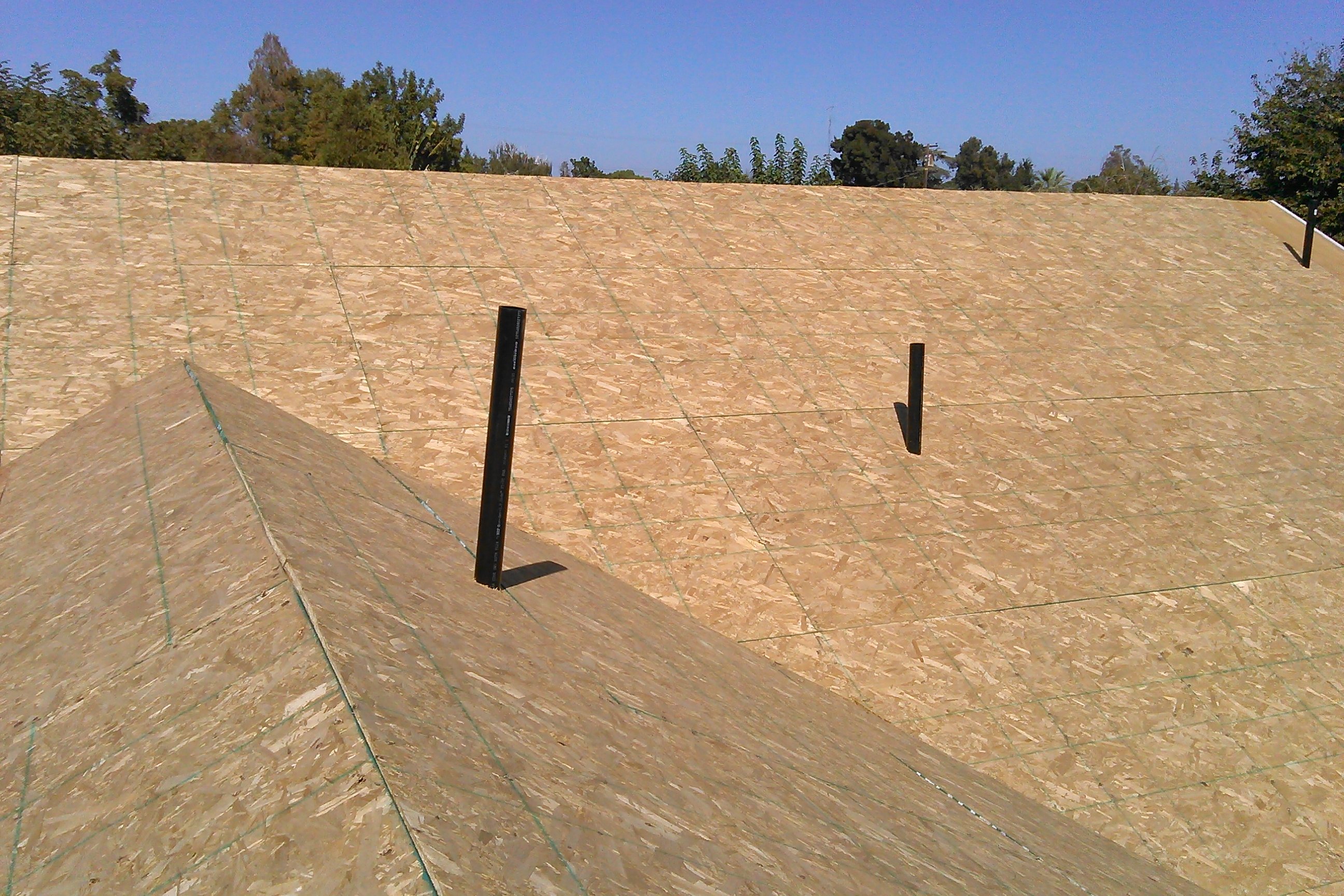
Properly installed OSB roof decking with visible spacing.
What is Plywood?
Plywood is another engineered wood product, but its construction differs significantly from OSB. Plywood is made by peeling thin layers (veneers) of wood from logs, stacking these veneers with the grain direction alternating in successive layers, and bonding them together with adhesive under heat and pressure. The cross-graining technique provides dimensional stability and strength.
Plywood is typically graded based on the quality of the face and back veneers (A, B, C, D grades) and its exposure durability (Interior, Exterior, Exposure 1, Exposure 2). For roof sheathing, Exposure 1 or Exterior grade plywood is commonly used, often with a C-D or D-D grade, indicating the quality of the unseen inner and back veneers. CDX is a common designation for C-D grade plywood suitable for exterior exposure during construction.
Characteristics of Plywood
- Appearance: Shows distinct wood grain patterns from the veneers.
- Consistency: Strength and quality can vary depending on the grade and species of wood used.
- Cost: Generally more expensive than OSB.
- Weight: Can be slightly lighter than OSB of the same thickness.
- Moisture Performance: More resistant to edge swelling than OSB when exposed to moisture, though prolonged exposure is still detrimental. It tends to absorb and release moisture more evenly.
- Nail Withdrawal Resistance: Offers excellent nail holding power due to its layered structure.
Plywood has been a standard in construction for decades and is valued for its strength, stability, and reliability, particularly in applications where moisture resistance is a higher priority.
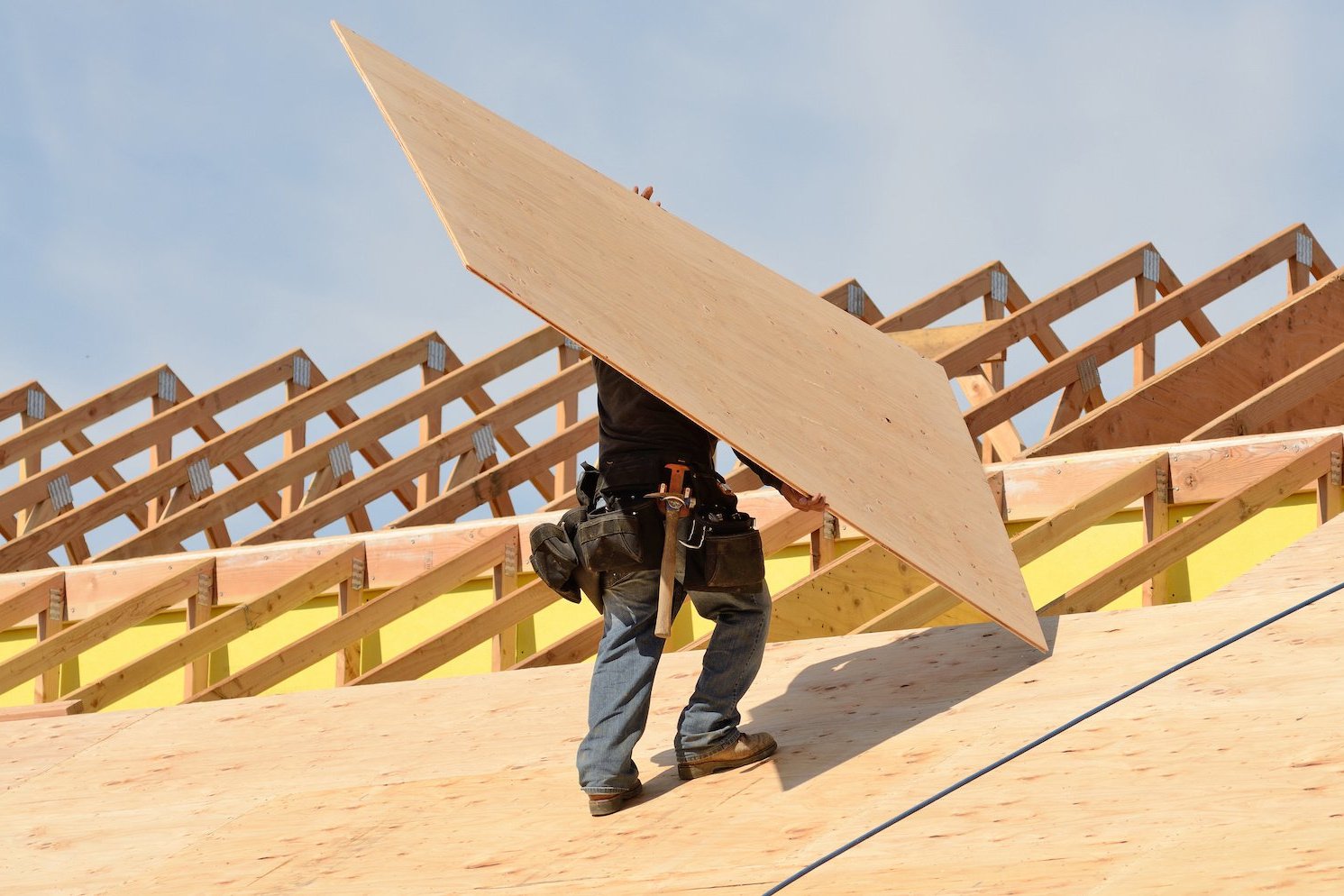
Plywood decking being installed on a residential roof structure.
OSB vs. Plywood: A Detailed Comparison
Choosing between OSB and plywood for your roof decking involves weighing several factors. While both meet minimum building code requirements for many applications, their differences can influence the long-term performance and cost-effectiveness of your roof.
Cost
This is often the primary driver for material choice. OSB is almost always less expensive than plywood of equivalent structural rating. The cost difference can be significant, especially on large roofing projects, making OSB a popular choice for budget-conscious builders and homeowners. However, it's crucial to consider the total cost over the roof's lifespan, not just the initial material price.
Strength and Structural Performance
Both OSB and plywood are manufactured to meet specific structural standards (like those set by APA – The Engineered Wood Association). For a given thickness and span rating (e.g., 7/16" sheathing rated for 24" on-center framing), both materials provide adequate strength for most residential roofing applications.
- Plywood is often considered to have slightly better shear strength and racking resistance due to its cross-laminated veneer structure. This can be particularly beneficial in areas prone to high winds or seismic activity.
- OSB, when manufactured to standard specifications, also provides excellent shear strength. Its strength is more uniform across the panel compared to some lower grades of plywood.
For standard residential roofs with typical rafter spacing, either material is usually structurally sufficient if the correct thickness and span rating are used.
Moisture Resistance and Performance
This is perhaps the most significant difference between OSB and plywood, and a critical factor in a region like St Helens, Oregon, known for its rainfall.
- Plywood tends to handle temporary exposure to moisture better. While it will absorb water, it tends to dry out more evenly and is less prone to significant, permanent edge swelling compared to OSB.
- OSB is more susceptible to swelling, particularly along the edges, if exposed to moisture for extended periods during construction or through leaks later on. This swelling can lead to unevenness under the roofing material, telegraphing through shingles and potentially affecting their adhesion and appearance. Once OSB edges swell significantly, they often do not fully recover their original dimension.
Proper installation, including leaving appropriate expansion gaps between panels, and prompt installation of the underlayment and final roofing material are crucial for minimizing moisture-related issues with both, but especially with OSB. Adequate roof ventilation is also paramount, regardless of the decking material, to manage moisture within the attic space.
Installation
Both materials come in standard 4x8 foot panels, making installation relatively straightforward.
- OSB panels are very consistent in size and squareness, which can make installation slightly faster and easier. However, their weight can be a factor, as OSB is often denser than plywood of the same thickness.
- Plywood panels might have slight variations in size or squareness depending on the grade and manufacturer. They are generally slightly lighter, which can be advantageous when handling on a roof.
Both require proper fastening patterns (nailing schedules) as specified by building codes to ensure they provide the required structural support and wind resistance. It is also critical to leave a small gap (typically 1/8 inch) between panels to allow for expansion due to moisture or temperature changes, preventing buckling.
Weight
While the difference is usually not dramatic, OSB can be slightly heavier per square foot than plywood of the same thickness and rating. This can be a minor consideration for installers handling many panels.
Environmental Impact
Both are wood products, but their manufacturing processes and source materials differ. OSB often uses smaller, fast-growing trees and maximizes wood fiber utilization. Plywood traditionally uses larger logs. Both use adhesives, and the environmental impact of these can vary. From a resource efficiency standpoint, OSB is often cited as having a lower environmental footprint per panel produced.
Suitability for Different Roofing Materials
Both OSB and plywood are suitable substrates for most common roofing materials, including asphalt shingles, metal roofing, and many types of tile, provided the correct thickness and span rating are used. The critical factor is ensuring the decking is flat, smooth, and dry before installing the underlayment and final roofing material. Any significant unevenness, particularly swollen edges on OSB, can negatively impact the appearance and performance of the finished roof, especially with flat-lying materials like architectural shingles.
Factors Influencing the Choice in St Helens, Oregon
Given the climate in St Helens, Oregon, which experiences significant precipitation, the moisture performance of the decking material is a particularly important consideration. While proper installation and a robust roofing system (underlayment, flashing, ventilation) are the primary defenses against moisture, the decking's inherent resistance to swelling and ability to handle temporary dampness can be a factor in resilience.
- For homeowners prioritizing budget, OSB remains a viable and code-compliant option, provided that installation is meticulous, adequate expansion gaps are left, and the roof is properly sealed and ventilated to minimize moisture exposure.
- For those seeking maximum durability and a higher margin of safety against moisture issues, plywood (specifically Exposure 1 or Exterior grade CDX) offers superior performance in damp conditions and may be worth the extra investment, especially on complex roofs or where construction might be subject to delays exposing the decking to weather.
Local building codes in St Helens or surrounding areas will specify minimum requirements for decking thickness and span rating based on rafter spacing and design loads (like snow or wind). Always ensure the chosen material meets or exceeds these minimums.
Considering a roof replacement or planning for future projects? Get a fast, accurate estimate from SkyQuote to help with your budget planning.
Get a free instant roof estimate
Installation Considerations and Potential Issues
Regardless of whether you choose OSB or plywood, proper installation is paramount to the performance and longevity of the roof decking and the entire roofing system.
- Thickness and Span Rating: Ensure the chosen material has the correct thickness and span rating for your rafter or truss spacing (e.g., 7/16" or 15/32" for 24" on-center framing, 3/8" or 7/16" for 16" on-center). Using material that is too thin can lead to sagging between rafters, especially under the weight of snow or foot traffic.
- Panel Orientation: Panels should generally be installed perpendicular to the rafters or trusses, with edges meeting on framing members unless the panels are tongue-and-groove.
- Expansion Gaps: As mentioned, leaving a 1/8-inch gap between all edges of the panels is critical. Wood products expand and contract with changes in temperature and humidity. Without these gaps, panels can push against each other, leading to buckling or ridging in the decking, which will be visible through the roofing material.
- Fastening Schedule: Use the correct type and length of fasteners (nails or screws) and follow the specified nailing pattern (e.g., 6 inches on center along edges, 12 inches in the field) to ensure adequate wind uplift resistance and structural integrity. Fasteners should penetrate the framing by at least 1 inch.
- Handling and Storage: Store decking panels flat, off the ground, and covered to protect them from moisture before installation. Avoid installing wet panels.
- Ventilation: Adequate attic ventilation (a balance of soffit and ridge vents) is crucial for managing temperature and moisture beneath the roof deck. Poor ventilation can lead to condensation, which can saturate the decking, promote mold growth, and cause premature deterioration of the decking and roofing materials, regardless of whether it's OSB or plywood.
Potential issues arising from improper decking choice or installation include:
- Sagging: If the decking is too thin for the span or not properly supported.
- Buckling/Ridging: Caused by insufficient expansion gaps or installing wet panels.
- Edge Swelling: More common with OSB if exposed to moisture, leading to unevenness.
- Fastener Pull-Through: Can occur if the decking is too thin or the fasteners are not properly spaced or sized, compromising the ability to hold roofing materials, especially in high winds.
- Mold and Rot: Resulting from persistent moisture issues, often due to leaks or poor ventilation, leading to structural damage to the decking and framing.
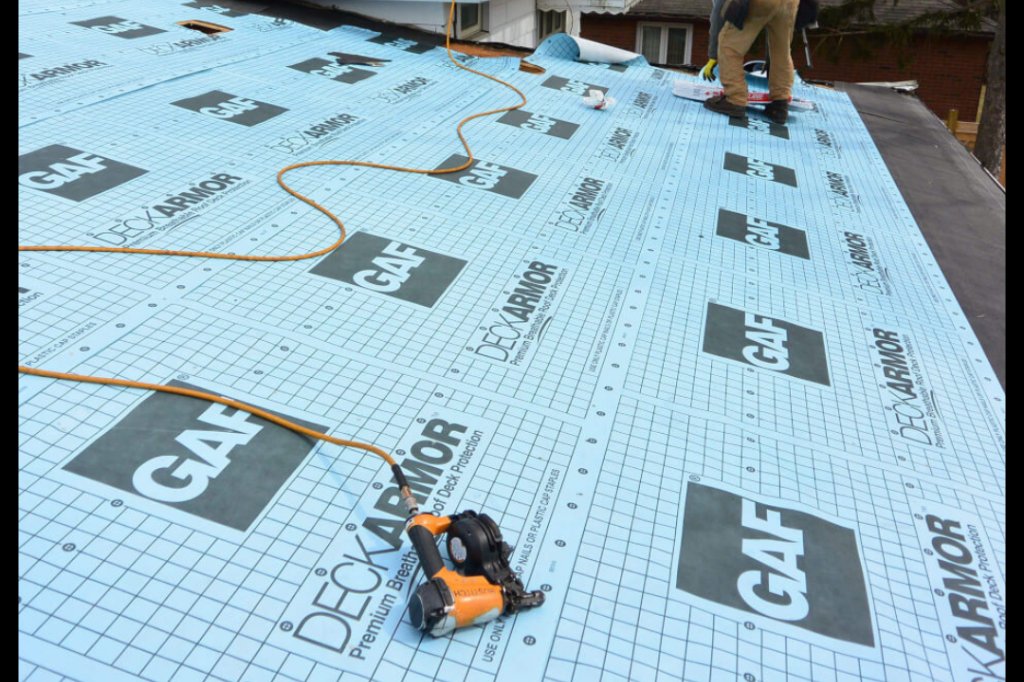
Roof underlayment being installed over decking panels. This protective layer is essential regardless of decking material.
When to Choose Which: A Summary
Based on the comparison, here's a simplified guide:
- Choose OSB if:
- Budget is the primary concern.
- You are confident in the installer's ability to follow best practices for moisture protection (proper sealing during construction, adequate gaps, immediate underlayment installation).
- The roof design allows for effective ventilation.
- The local climate is relatively dry (though St Helens, Oregon is not).
- Choose Plywood if:
- You prioritize maximum durability and moisture resilience.
- The project timeline might involve the decking being exposed to weather for a longer period.
- The roof has complex geometry or low slopes where water might linger (though low slopes have specific requirements regardless of decking).
- You want a material with a long-standing track record of performance in various conditions, including humid or wet environments.
- Slightly higher material cost is acceptable for potentially greater peace of mind regarding moisture issues.
Ultimately, both materials can provide a structurally sound and long-lasting roof deck when the correct grade and thickness are used and installed properly in conjunction with a high-quality underlayment and well-ventilated attic space.
Common Questions About Roof Decking
How thick should roof decking be?
The required thickness depends on the spacing of your rafters or trusses (the span). Common requirements are 7/16" or 15/32" thick for framing spaced 24 inches on center, and 3/8" or 7/16" for framing spaced 16 inches on center. Always consult local building codes and your roofing professional to ensure the correct thickness and span rating are used for your specific roof structure.
Does the decking material affect the lifespan of my shingles?
Yes, indirectly. While the quality of the shingles and underlayment are most direct factors, the decking provides the base. An uneven, sagging, or moisture-damaged deck can cause shingles to lay improperly, affect their sealant strips (for asphalt shingles), and potentially lead to premature failure. Swollen OSB edges are a common culprit for visible lines or bumps telegraphing through shingles.
Can I mix OSB and plywood on the same roof?
While possible structurally if thicknesses and ratings are compatible, it's generally not recommended for aesthetic consistency and potential differences in how they react to moisture and temperature changes over time. It's best practice to use a single type of decking material across the entire roof.
What happens if the decking gets wet during installation?
Temporary wetting is usually not a major issue if the panels are allowed to dry thoroughly before the underlayment is installed. However, prolonged exposure or repeated wetting can cause permanent damage, especially edge swelling in OSB. Any panel that shows significant swelling, delamination (in plywood), or mold growth should be replaced before continuing the roofing process.
Is OSB or plywood better for high wind areas?
Both materials, when installed at the correct thickness and with the proper fastening schedule as required by code for high-wind zones, can provide adequate resistance. Plywood is sometimes preferred for its slightly higher shear strength, but correctly specified and installed OSB is also code-compliant for many high-wind applications. The fastening schedule (nail type, length, and spacing) is often the more critical factor for wind uplift resistance.
Do I need to replace the decking during a roof replacement?
Not always. If the existing decking is sound – meaning it's not sagging, water-damaged, rotten, moldy, or showing signs of delamination or significant swelling – it may not need to be replaced. However, many roofing contractors will recommend replacing decking that is older, shows any signs of deterioration, or is an older, thinner material that doesn't meet current standards. Replacing decking adds cost but ensures a solid base for your new roof, maximizing its lifespan.
If you're unsure about the condition of your existing roof decking or need a professional assessment after noticing issues like leaks or storm damage, booking an appointment with a qualified roofer is the best step.
Book a professional roofing appointment
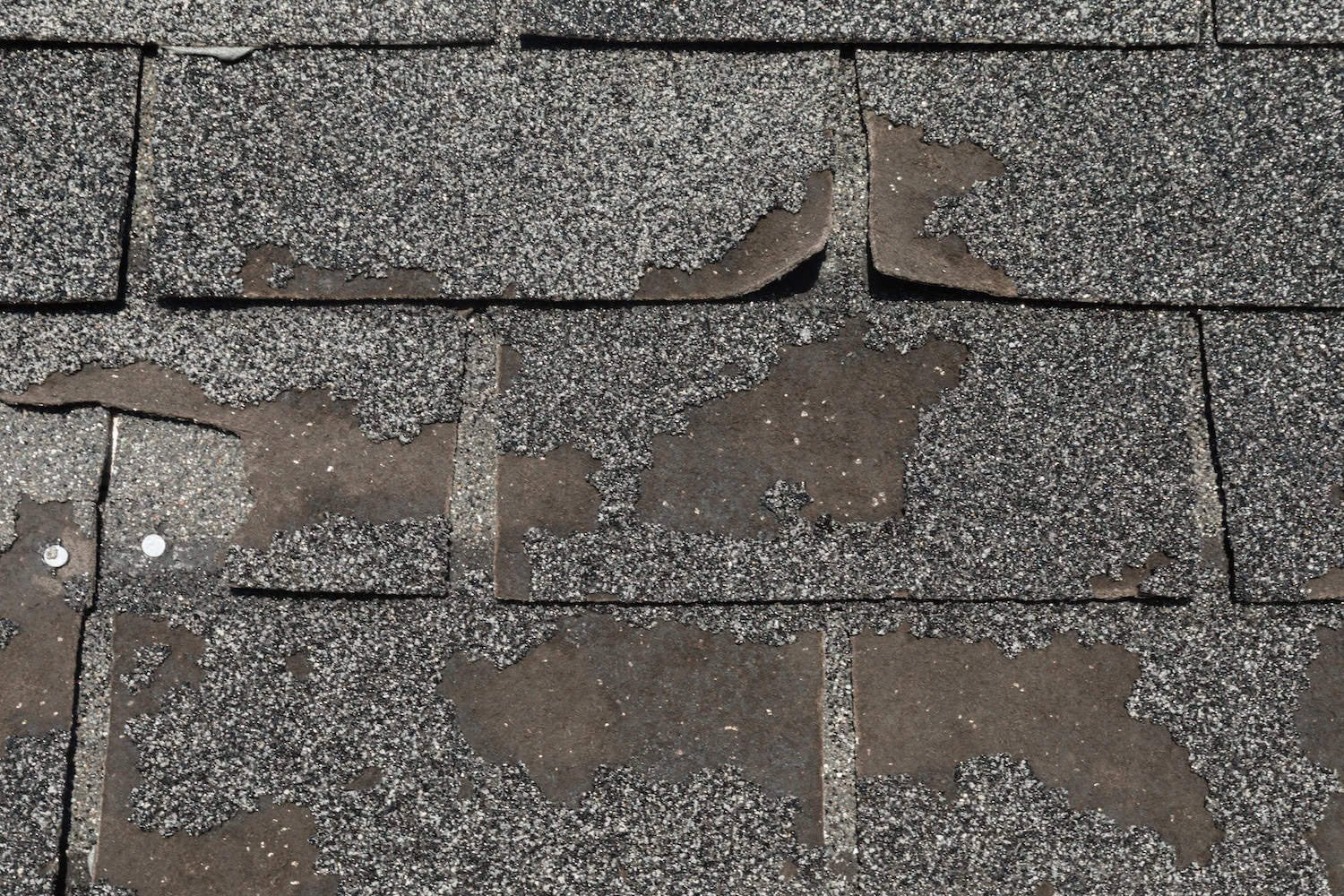
Severe granule loss on shingles may indicate an aging roof system where decking condition should also be assessed during replacement planning.
Making the Right Choice for Your St Helens Home
Selecting between OSB and plywood for your roof decking is a decision that balances cost, structural needs, and resilience to environmental factors, particularly moisture. In a location like St Helens, Oregon, where rain is a regular occurrence, the moisture performance characteristics of each material warrant careful consideration. While OSB offers a cost advantage, the inherent moisture resistance of plywood provides an extra layer of confidence for some homeowners.
Ensuring a durable roof goes beyond just the decking material. It requires proper installation techniques, the use of high-quality underlayment and flashing, and adequate attic ventilation to manage moisture and temperature fluctuations.
Regardless of your choice, consulting with experienced roofing professionals is invaluable. They can assess your specific roof structure, discuss the pros and cons of each material in the context of your home's design and the local climate, and ensure that the installation meets all current building codes and best practices.
Choosing the right foundation for your roof is an investment in the long-term protection and value of your home.
